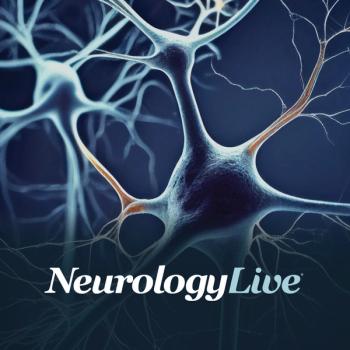
Higher Rates of Stroke Observed With COVID-19 Than Influenza
While further study is required, the data support vigilance of the symptoms and signs of acute ischemic stroke in patients with COVID-19 to reduce the burden of long-term disability.
Alexander E. Merkler, MD
Data from a retrospective cohort study from 2 academic hospitals in New York City suggest that an estimated 1.6% of adults with COVID-19 who were hospitalized or presented to the emergency department
The study included a COVID-19 cohort of 1916 patients (data collected March 4, 2020, to May 2, 2020), of which 31 patients (1.6%; 95% CI, 1.1—2.3) had an acute ischemic stroke, and an influenza cohort of 1486 patients (data collected January 1, 2016, to May 31, 2018), of which 3 patients (0.2%; 95% CI, 0.0–0.6) had an acute ischemic stroke.
“This systematic investigation expands our understanding of the characteristics, mechanisms, and short-term outcomes of acute ischemic stroke in patients with COVID-19 infection,” the authors, including Alexander E. Merkler, MD, assistant professor of neurology, Weill Cornell Medicine, wrote. “We found that most ischemic strokes occurred in older age groups, those with traditional stroke risk factors, and people of color. We also noted that initial plasma D-dimer levels were nearly 3-fold higher in those who received a diagnosis of ischemic stroke than in those who did not. In-hospital strokes accounted for nearly three-quarters of all strokes, and more than one-third occurred in those treated with mechanical ventilation.”
After adjustment for age, sex, and race, the likelihood of experiencing a stroke was higher with COVID-19 infection than with influenza infection (odds ratio [OR], 7.6; 95% CI, 2.3—25.2). The association persisted across sensitivity analyses adjusting for vascular risk factors, viral symptomatology, and intensive care unit admission. When adjusting for the number of vascular risk factors and ICU admissions, the OR was 4.6 (95% CI, 1.4–15.7).
The COVID-19 cohort’s median age was 64 years (IQR, 51—76) and the influenza cohort’s median age was 62 years (IQR, 42–78). “A panel of neurologists adjudicated the primary outcome of acute ischemic stroke and its clinical characteristics, mechanisms, and outcomes. We used logistic regression to compare the proportion of patients with COVID-19 with ischemic stroke vs the proportion among patients with influenza,” Merkler and colleagues noted.
READ MORE:
In the COVID-19 cohort, the top complaints were dyspnea/hypoxia (n = 1358; 71%), cough (n = 1297; 68%), and fever (n = 1275; 67%). There were 330 patients (17%) with severe COVID-19 infection who required mechanical ventilation. Symptoms of a viral respiratory illness were present in 1427 patients (96%) in the influenza cohort, including cough (n = 1188; 80%), fever (n = 833; 56%), and dyspnea/hypoxia (n = 553; 37%). In total, there were 48 patients (3%) with severe influenza infection who required mechanical ventilation.
Of those with acute ischemic stroke overall, the median age of patients was 69 years (interquartile range [IQR], 66—78), and 18 (58%) were men. Stroke was the reason for presentation to the hospital in 8 cases (26%).
“These findings suggest that clinicians should be vigilant for symptoms and signs of acute ischemic stroke in patients with COVID-19 so that time-sensitive interventions, such as thrombolysis and thrombectomy, can be instituted, if possible, to reduce the burden of long-term disability,” Merkler et al. wrote. “In the meantime, further elucidation of thrombotic mechanisms in patients with COVID-19 may yield better strategies to prevent disabling thrombotic complications like ischemic stroke.”
Earlier this month, Moderna’s COVID-19 vaccine candidate, mRNA-1273, was shown to induce immune responses in all 45 of its volunteer patients administered doses in a phase 1, dose-escalation, open-label trial, without any trial-limiting safety concerns identified. The investigators described the immunogenicity profile of mRNA-1273 as “rapid and robust,” noting that the 100-mcg dose elicited high neutralization responses, Th1-skewed CD4 T cell responses, and a reactogenicity profile which was more favorable than the observed higher and lower doses. All told, 3 different doses (25 mcg, 100 mcg, 250 mcg) were assessed among the volunteer participants, with 2 doses injected intramuscularly into the upper arm approximately 28 days apart. Participants were aged 18 to 55 years old.2
The findings, reported by the mRNA-1273 Study Group, supports the advancement of a 100-mcg dose vaccine to a phase 3 trial assessment in later summer 2020, while a phase 2 trial of a pair of different doses of the potential vaccine continue among 600 healthy adults. Moderna, along with The National Institutes of Health (NIH), announced the beginning of the phase 1 trial in mid-March. In mid-May, the US Food and Drug Administration (FDA) granted the vaccine candidate fast track designation.
REFERENCES
1. Merkler AE, Parikh NS, Mir S, et al. Risk of Ischemic Stroke in Patients With Coronavirus Disease 2019 (COVID-19) vs Patients With Influenza. JAMA Neurol. Published online July 2, 2020. doi:10.1001/jamaneurol.2020.2730
2. Jackson LA, Anderson EJ, Rouphael NG, et al. An mRNA Vaccine against SARS-CoV-2 — Preliminary Report. N Engl J Med. Published online July 14, 2020. doi: 10.1056/NEJMoa2022483.
Newsletter
Keep your finger on the pulse of neurology—subscribe to NeurologyLive for expert interviews, new data, and breakthrough treatment updates.


































